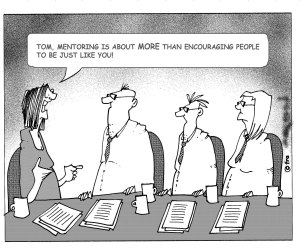Board Competence: Putting It All Together
Posted: November 14, 2014It’s a busy fall of workshops and conferences for me. I’ve been hearing inspiring speakers and meeting accomplished, savvy experts. I’m enjoying a season of learning and networking. About now it’s time to synthesize themes and messages for big ideas that come through. Here are some issues and aims in my sights.
Raising the Board Bar
Greater board competence – we know that’s always a goal. And it’s not to say every board is plagued by dysfunction. More so, it’s about pushing for better, stronger, more courageous boards. Anne Wallestad, President and CEO of BoardSource, said it well in a recent Huffington Post piece when she challenged board members to “Don’t Just Sit on a Board: Stand for Your Mission.” Her call: boards should be more active – whether more informed or simply braver – in advocating for policies that support their mission.
It’s a call that resonates. Too many boards get caught up in the mundane and miss this big-picture responsibility. That’s why I recommend an organization’s mission statement be included on every board meeting agenda. It’s why I’ve long argued the importance of a case for support that clearly articulates a nonprofit’s mission, how it’s being met and how, with help from donors – i.e., partners, courtesy of Harvard fundraising authority Jennifer McCrea – an organization can do more.
Education – Again! – and Mentoring
Competence also speaks to knowledge and getting the job done. At another workshop, BoardSource senior consultant Chuck Loring described good governance as “not a project but a journey.” Absolutely. Boards get better at governance through increased knowledge and experience. But without the knowledge part, experience can include too much trial and error – which, let’s be honest, is no way to govern.
There are many ways to grow in knowledge, and an approach that’s echoed strongly in many settings and conversations is mentoring. I’ve mentioned it before but it’s worth repeating because it’s powerful and collegial. As, say, a more senior board member shows a new one the ropes, there’s real potential for two-way learning. Particularly if it’s a next generation member with technology or social media expertise to share, or who can offer ideas or entry points for connecting with younger segments of the community. That’s a win-win for the organization.
Recruiting Next Gen
Yet another theme is building more boards with next generation members. I explored that topic in my October blog – and if the fact it was picked up by “Take Action: Social Impact” is an indication, it’s an aim on the rise. As I plan my December Hudson Valley panel on opportunities and roadblocks to young professional board participation, I’m exploring for multiple viewpoints and strategies. I’ll be sharing more on this vital subject in my blogs and dashboards. “Next Gen” members are the literal future of every nonprofit.
Looking for informed guidance with board development? Let’s talk.

